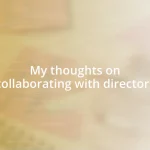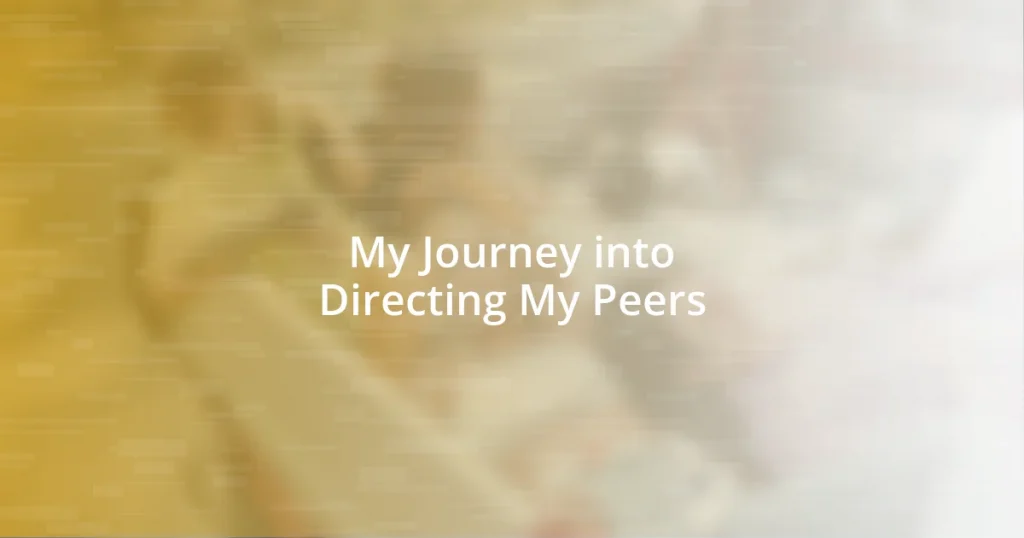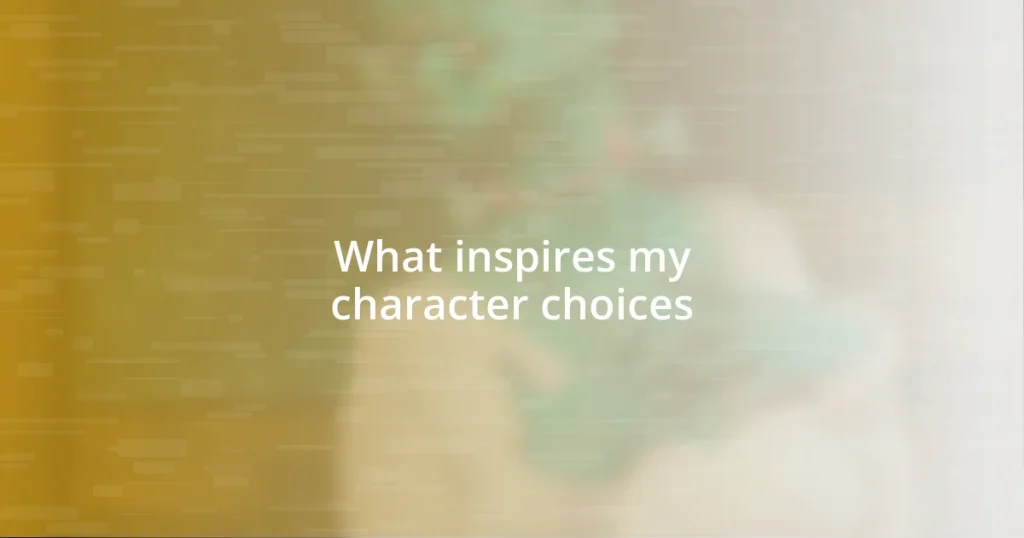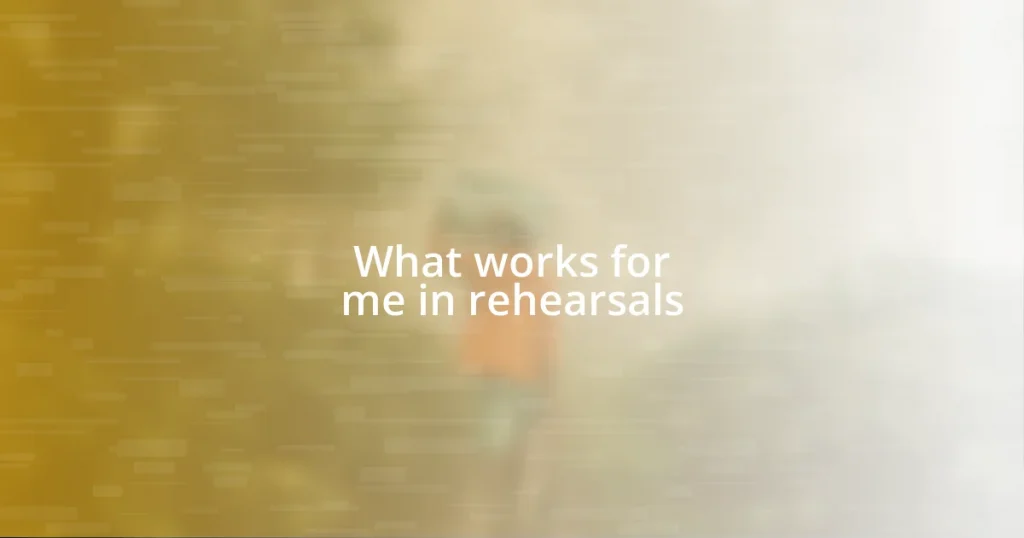Key takeaways:
- Transformative peer leadership emphasizes collaboration, vulnerability, and emotional intelligence to enhance team dynamics and ownership.
- Effectively navigating challenges involves proactive communication, adaptability, and fostering a supportive environment for team members.
- Measuring success as a leader includes team growth, open feedback loops, and prioritizing emotional well-being over mere project outcomes.

Understanding Peer Leadership
Peer leadership is a fascinating concept that really resonates with my experiences. I remember a time when I was put in charge of a group project. Rather than dictating tasks, I found my strength in listening to everyone’s ideas. This approach not only made my peers feel valued but also cultivated a sense of ownership among us. Isn’t it interesting how leadership can shift from authority to collaboration?
Another vital aspect of peer leadership is the emotional intelligence it requires. In those moments of tension or disagreement, I realized the importance of empathy. For instance, during a particularly stressful week, I noticed a teammate struggling. By reaching out and offering support, I not only deepened our connection but also strengthened the group’s overall morale. Have you ever thought about how small acts of kindness can enhance team dynamics?
Understanding that vulnerability can be a strength is crucial in peer leadership. I once hesitated to share my uncertainties during a discussion, worried it might undermine my position. But when I finally did, it opened the door for others to express their hesitations as well. This mutual honesty transformed our dialogue and fostered a safer environment for everyone. It begs the question—can you reflect on moments when vulnerability shaped your own leadership experience?

Identifying Leadership Styles
Identifying leadership styles is essential for effective peer leadership. I recall the time when I observed different styles emerging in group settings. For instance, one teammate naturally took on a more democratic approach, encouraging everyone to voice their thoughts. In contrast, another preferred a more authoritative stance, directing the conversation. Understanding these styles helped me adapt my own approach depending on the situation and the team dynamics, creating a more cohesive environment.
- Democratic Leadership: Engages everyone’s input, fostering collective decision-making.
- Authoritarian Leadership: Clearly outlines tasks, often moving projects forward but potentially stifling creativity.
- Laissez-Faire Leadership: Provides autonomy, allowing team members to explore ideas, but might lead to lack of direction if overused.
- Transformational Leadership: Inspires and motivates by creating a vision, encouraging team members to exceed expectations.
Recognizing these styles allows us to better navigate our roles within a group. I learned to appreciate the balance required between being decisive and inclusive. During a planning stage for a project, I experimented with blending these styles, sometimes stepping back to let others lead. This not only bolstered their confidence but also introduced fresh perspectives that I hadn’t considered before, enhancing our final outcome significantly.

Building Trust Among Peers
Building trust among peers is foundational to any successful leadership experience. In my journey, I’ve discovered that trust starts with being genuine. For instance, I remember a project where I decided to share not just my ideas but also my fears about the outcome. This honesty prompted others to open up, creating a safe space where everyone felt comfortable contributing. Isn’t it amazing how vulnerability can build bonds?
Another important factor is consistency in our actions. I’ve noticed that when I regularly checked in with my team members, asking about their progress and offering support, it reinforced their trust in me. They knew I was invested in their success, not just the final product. This commitment creates a foundation where everyone feels valued and understood. Have you ever considered how simple gestures can lead to stronger connections?
Lastly, fostering a collaborative environment is critical. Each time I organized brainstorming sessions that welcomed all ideas with no judgment, it confirmed that every voice mattered. I recall a time when a quiet member finally shared a brilliant suggestion that reshaped our project. By valuing everyone’s thoughts, we not only built trust but also sparked creativity that ultimately lifted our collective performance. How do you create spaces for collaboration in your own experiences?
| Trust-Building Strategies | Personal Experience |
|---|---|
| Openness and Honesty | Sharing my fears invited others to do the same. |
| Consistency | Regular check-ins reinforced my commitment to the team’s success. |
| Collaboration | Brainstorming sessions encouraged all ideas, leading to unexpected innovations. |

Developing Communication Skills
Developing effective communication skills has been pivotal in my journey as a peer director. I still remember a time when I struggled to convey my vision for a project. After seeking feedback from my teammates, it became clear that my message was muddled. This experience taught me the importance of clarity and the need to tailor my communication style to my audience. Isn’t it fascinating how adjusting just a few words can change the entire conversation?
Listening actively is another critical component of effective communication. I learned this during a meeting where I noticed my teammates hesitated to share their thoughts, possibly feeling overshadowed. By practicing reflective listening—paraphrasing their ideas back to them—I discovered that simply acknowledging their contributions invited richer discussions. It’s incredible how validating someone’s voice can create an atmosphere that encourages openness. Have you ever considered how powerful it can feel to be truly heard?
Lastly, I’ve realized the art of non-verbal communication often goes unnoticed. During a presentation, I noticed that my nervous fidgeting distracted from my message. By consciously maintaining eye contact and using open body language, I felt more confident and engaged my audience effectively. Body language speaks volumes, doesn’t it? This understanding has transformed my interactions, enriching collaboration and strengthening our overall team dynamics.

Creating Collaborative Environments
Creating a collaborative environment is all about embracing diversity and nurturing it. I remember a project where we had team members from various backgrounds. By encouraging everyone to share their unique perspectives during our discussions, I witnessed fresh ideas bubbling up naturally. Have you ever noticed how different viewpoints can illuminate paths you might never have considered? It’s this kind of dynamic that can lead to real innovation, and it’s exciting when it happens.
In my experience, establishing clear roles and responsibilities helps maintain focus while promoting collaboration. In one instance, I designated specific tasks to team members based on their strengths but made it clear that ideas were always welcome. This approach empowered my peers to take ownership while fostering a sense of shared responsibility. How do you balance individual contribution with collaborative teamwork in your own projects? Each contributor felt valued, and we thrived in that environment because everyone was invested in one another’s success.
Lastly, I’ve found that celebrating achievements—big or small—plays a crucial role in sustaining collaboration. I initiated a simple ritual where we would share “win moments” during our meetings, recognizing everyone’s contributions. After one session, I saw a spark in my teammates’ eyes, their pride shining through when their efforts were acknowledged. It was a reminder that collaboration is a two-way street; when we uplift each other, we empower our team as a whole. What celebrations have you found to be impactful in your collaborative efforts?

Navigating Challenges Effectively
Navigating challenges effectively requires a proactive mindset. I recall a project where everything that could go wrong did—tight deadlines, conflicting schedules, and unexpected setbacks. Instead of getting overwhelmed, I took a step back to assess the situation. Have you ever found yourself in a similar whirlwind? This reflective pause allowed me to regroup and prioritize tasks, making the chaos feel manageable again.
Communication played a pivotal role in overcoming obstacles. Once, during a critical phase, we faced a significant disagreement on the direction of our project. Rather than letting the tensions escalate, I organized a casual brainstorming session where we could voice our concerns openly. It’s amazing how just taking the time to talk things out can clarify misunderstandings. Have you experienced the relief that comes from simply sharing your thoughts? We left that meeting with a renewed sense of purpose, and it reminded me that challenges often foster deeper connections when approached collectively.
I also learned the significance of being adaptable. When one of our key team members had to step back unexpectedly, I realized we had to pivot quickly. By reshuffling responsibilities and encouraging others to step into new roles, we not only kept the project moving forward but also bolstered our resilience as a group. I often reflect on how change can be daunting yet instrumental in growth. Have you noticed how stepping out of your comfort zone can sometimes lead to the most rewarding experiences? Embracing these challenges with an open heart can truly transform your journey.

Measuring Success as a Leader
Measuring success as a leader isn’t purely about hitting targets; it’s also about the growth and development of your team. I vividly remember when I set up quarterly reviews not just to assess project milestones, but to explore personal experiences and individual progress. It’s fascinating to see how these conversations unveiled hidden talents among team members—have you ever facilitated a discussion that revealed strengths you didn’t know existed?
Another key aspect is the feedback loop. I learned that asking for input after a project can be incredibly revealing. There was a time when I solicited honest critiques from my peers after a major presentation, and the insights shared were invaluable. It was humbling but also a wake-up call, reminding me that success isn’t just my achievement—it’s a reflection of our collective efforts. How often do you seek feedback to refine your leadership approach?
Lastly, I believe that success as a leader is deeply tied to the emotional wellbeing of my team. One difficult period, when morale was low due to external pressures, pushed me to implement weekly “check-in” sessions. We shared both personal and professional struggles, fostering an environment of support. The difference in energy was palpable; it reassured me that success isn’t just about outcomes but about creating a space where everyone feels seen and heard. Do you prioritize emotional engagement within your team?















